Hi there. My name is Liz, and I write horror. That sounds like the beginning of an AA meeting, and maybe it should. I also write science fiction and fantasy, but nothing escapes having a dark tinge and a scary scene or two.
So, on to the questions! As someone with a non-traditional publishing experience, the topics I find the most fascinating that I get to talk about the least are the ways in which my unorthodox journey has given me insight into my profession and a unique set of skills.
Question #1: How did all of your previous experience get you to where you are today?
I love this question because it acknowledges that my journey as a self-publisher and small press owner had value and is an integral part of the artistic professional I am today. I am headstrong, a bit impatient and a self-starter, and that has served me well in writing, although it has not always led to me taking the most traditional paths. I attended the Odyssey Fantasy Writing Workshop in 2006, and from there I racked up a few short story sales, but eventually life (and the search for a meaningful day job) got in the way and my progress stalled. I took a chance, got a government grant and struck out on my own as a self-publisher.
Soon, when I felt confident in my ability to produce quality books, I started publishing other people too. Together with these amazing authors, Pop Seagull Publishing released two anthologies that I am incredibly proud of to this day. I love publishing other people, and wanted to be able to focus solely on outside work as a publisher. Plus, I had discovered that for a variety of reasons, I just wasn’t able to put as much effort into honing and promoting my own work when I was self-publishing. I made the difficult decision to put Pop Seagull on an indefinite hiatus while I pursued traditional publishing.
It wasn’t easy going from being a publisher to being a relatively obscure author, but I persevered, and I am happy to report that my supernatural horror novel The Face in the Marsh will debut from Renaissance Press in 2019.
I learned a lot of hard skill sets through becoming a publisher, including layout, cover and interior design and so much more, but it was the life lessons that were the most valuable. I learned, for instance, that perseverance pays off in dollars and cents. That not only do authors who submit more create positive relationships with editors, but authors who put out more books actually make more due to higher discoverability and people binge-reading their series. I learned that editors are people, with good reasons behind their decisions that 90% of the time have nothing to do with your story’s potential. I also learned about my own strengths and weaknesses. For instance, I am very good at charming folks in person and handing them a business card, and abominably bad at thinking up abstract marketing strategies and cold-calling promotional venues, to the point that hiring someone is a budgeting must.
These little things, and ten thousand more, sent me off into the traditional publishing world armed with experience and knowledge. I would encourage anyone to try self-publishing as long as they are willing to put in the work and do their homework on what it takes to put out a quality product. Which brings me to…
Question #2: There are so many indie published books out there. How do I know which ones to give a chance? Should I give any of them a chance?
I would love to hear this question come out of people’s mouths because it would mean that they are seeking out new voices in publishing, and not judging a book’s worth by ‘Can I buy it at Chapters?’ or ‘Were you on Oprah?’. I really wish more people would give indie books a chance and support small creators, but I do admit that the marketplace right now does not make discerning between indie books easy. I have a few rules of thumb of my own when picking out indie books to try. My first piece of advice would be to pick up indie books at conventions. You can meet the author, see if they resonate with you as a person, and best of all, you can get a look at the physical book, peek inside, and maybe even hear a reading to decide if you like it. This gives you more data than browsing on Amazon or other sites where things are just kind of piled in front of you.
Once you’ve got a title you think you might be interested in, open it up. Read a bit. See if the style works for you. I would also recommend looking at the cover and interior layout. I know it seems superficial, but it isn’t. It indicates how much time and effort the author has put into making sure they have a quality product, and that extends to writing just as much as technical stuff. Also, bad layout can make a book just as unreadable as poor prose.
Once you’ve read and liked an indie book, please review it and push it to your social media contacts. This makes a difference to all authors, but it can make the difference between making a living or languishing in obscurity to indie authors. Okay, PSA over. That’s all folks! Thanks for reading!


Ean Bowman
This is a test comment.